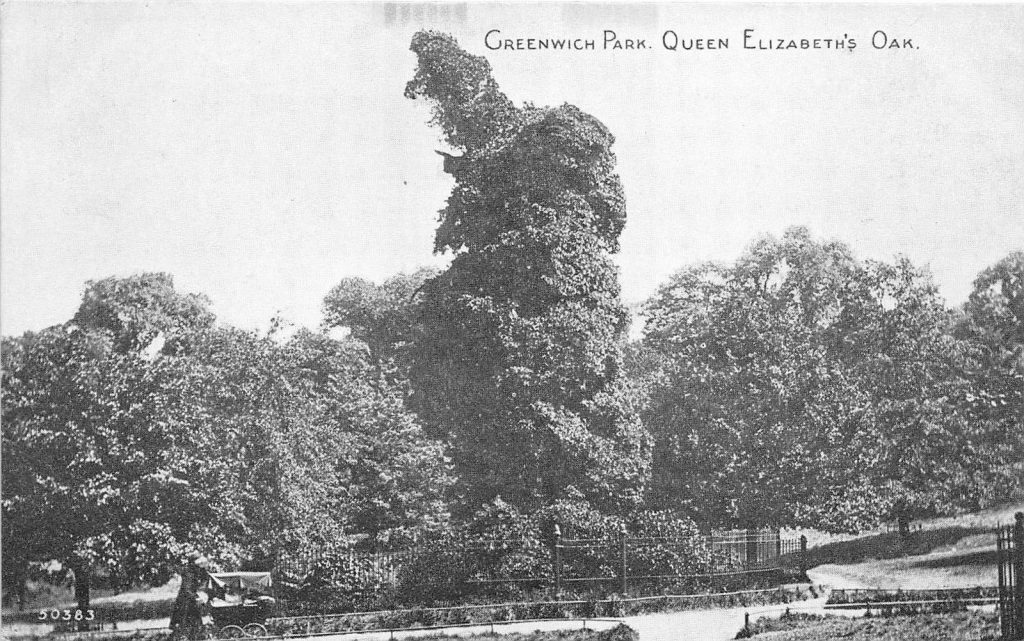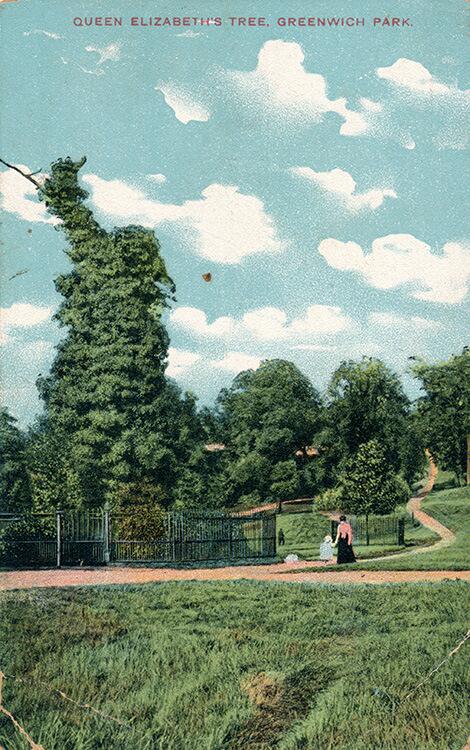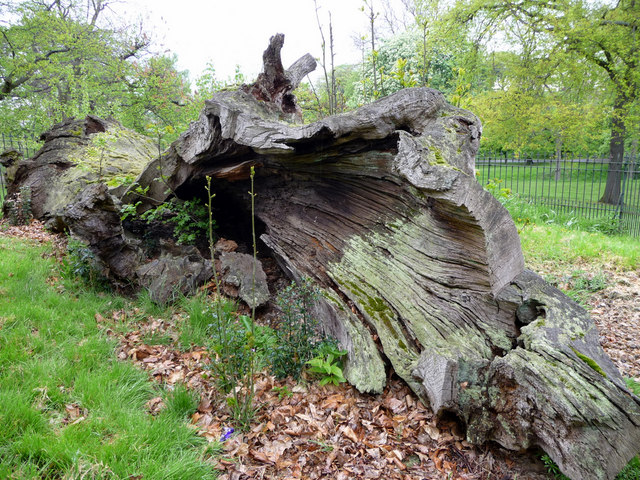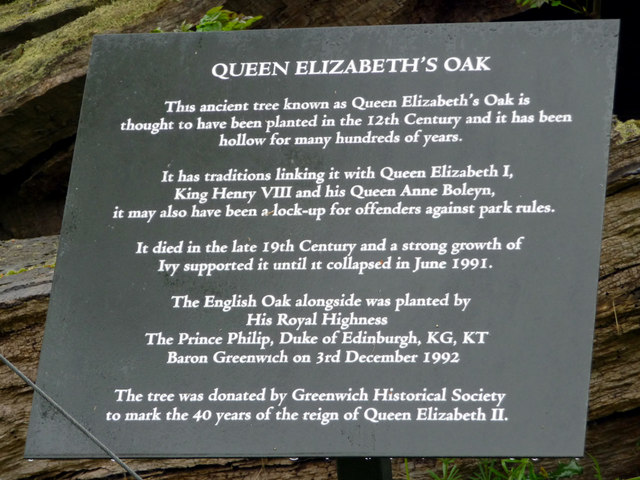The Queen Elizabeth Oak was the last survivor of the forest that grew on part of Blackheath, an outriding of the vast ancient raised tract of the impenetrable Forest of Anderida 120 miles long and nearly 40 miles (64km) wide in southeastern England, separating the London basis from the English Channel coast, spreading north through the breaks in the North Downs.
Britain of pre-Roman days (the Roman Senator Aulus Plautius led the invasion of Britain in 43 AD) was a wild and savage country. The typical English landscape of today, with fields and neat hedges, hardly existed. In early pre-Roman Britain forests ands scrub, fen, moor and marsh occupied most of the land. Britain was certainly far more rainy then than now, owing to the vast forests such as Anderida (named during the Roman conquest, and later in Anglo-Saxon and Medieval times known as the Weald) which covered the land, and consequently it would also have been more misty.
The last of the Roman legions left Britain in 405AD.
Writing in Greenwich Park: its History and Associations (1902), the then Superintendent of Greenwich Park, Angus Webster, wrote that,
The old tree beneath which Henry VIII. danced with Anne Boleyn, and whose hollow trunk was afterwards used as a prison, is still standing, although quite dead, … must, in its heyday, have been a tree of giant proportions, the hollowed trunk in which Queen Elizabeth oft partook of refreshments, and where offenders against the Park rules have been confined, being fully twenty feet in girth, while the internal cavity is six feet in diameter. A door was at one time placed on the entrance and a window cut through the shell in the direction of One Tree Hill. The interior is paved, and a rustic seat placed around, on
which fifteen persons can sit with comfort. The tree is quite dead (the last living shoots having been noticed about twenty-four years ago), and is mainly supported by a thick coating of ivy; but although every attention has been given to lessen the wind-pressure by reducing the surface of ivy, it is hardly likely that this ancient and honoured monarch of the forest will remain intact for many years.
The oak (tree number 0845 in Royal Parks’ tree schedule 2010, prostrate, mis-described as a sweet chestnut, later corrected) finally collapsed in a storm in June 1991.
The following year, a young English oak tree was donated by the Greenwich Historical Society, to mark 40 years of the reign of HM Queen Elizabeth II, and this was planted by HRH Duke of Edinburgh KG KT Baron Greenwich on 3 December 1992.





